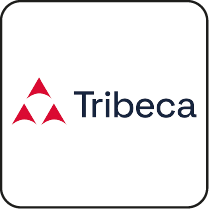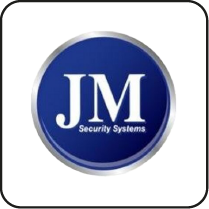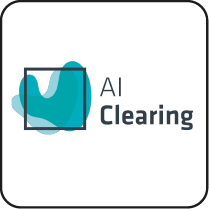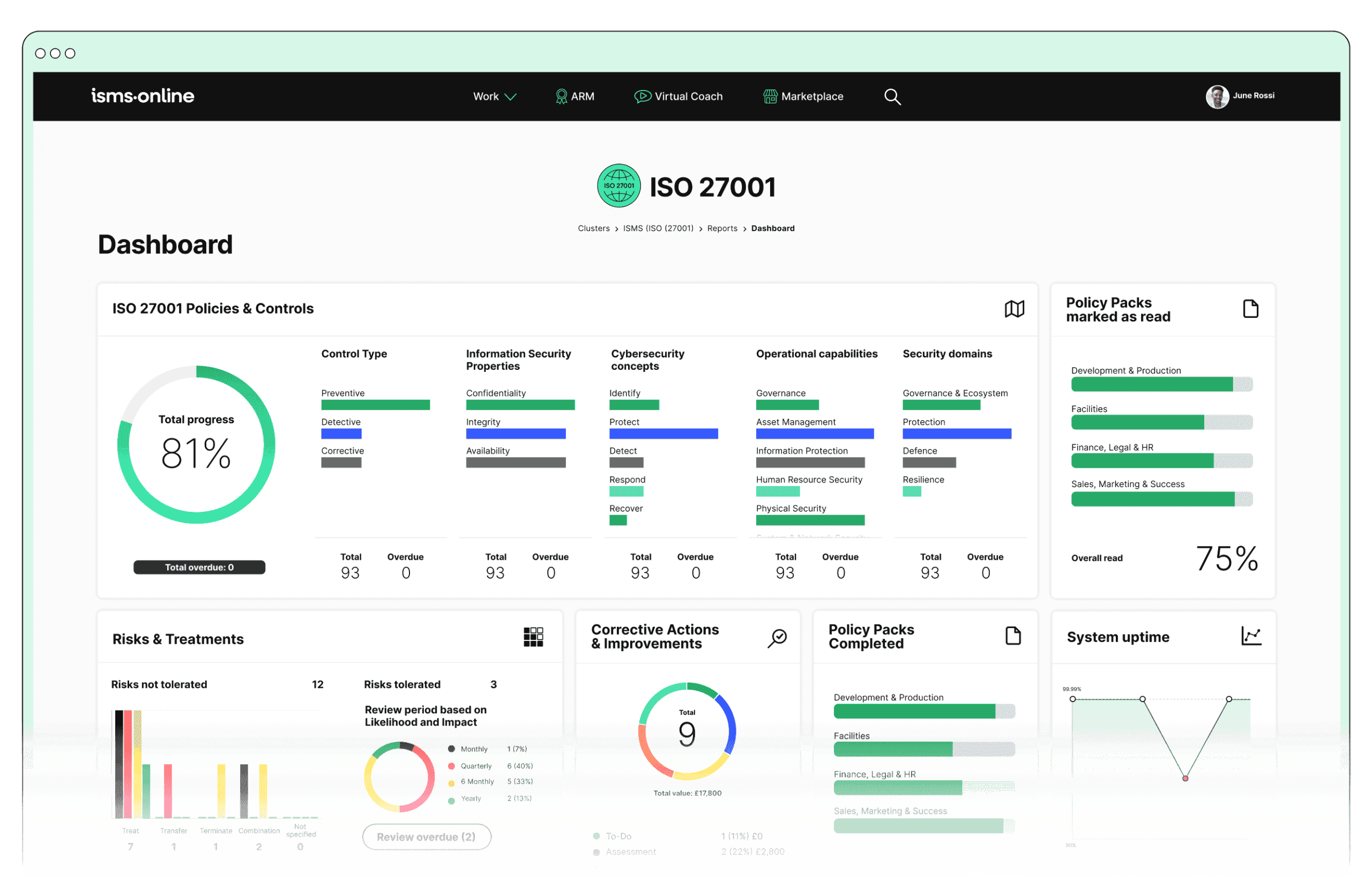What Strategic Advantages Emerge From Integrating Secure Development and SOC 2?
Operational Efficiency & Precision Risk Control
Embedding SOC 2 controls into your SDLC creates a system where each development phase serves as a checkpoint for risk evaluation and evidence collection. From requirements through design, every documented input reinforces control mapping and lays the foundation for reliable compliance evidence. This approach transforms risk management from a reactive chore into a proactive process, reducing remediation efforts and shortening audit cycles. Quantitative metrics—such as reduced incident response times and decreased compliance overhead—demonstrate how continuous control mapping drives operational clarity.
Strengthened Audit Readiness & Trust Signals
When security controls are incorporated at each stage of development, every modification and approval is traced with timestamped precision. This unbroken evidence chain solidifies the integrity of your system, delivering a clear audit window for evaluators. By ensuring that controls and corrective actions are perpetually validated, you not only meet the stringent SOC 2 criteria but also build compelling proof for auditors. In this framework, the focus is on structured documentation that converts compliance from a checklist into a robust defense mechanism.
ISMS.online’s Role in Streamlined Compliance
ISMS.online encapsulates this operational model by integrating control mapping with structured workflows. The platform simplifies control-to-evidence linking, ensuring that stakeholder actions, policy approvals, and KPI tracking appear as an organized, traceable chain. This concentrated approach relieves manual compliance burdens, allowing security teams to focus on strategic initiatives rather than backfilling documentation. Many audit-ready organizations now reduce user friction by shifting from reactive evidence collection to continuous assurance, which in turn enhances stakeholder confidence and positions your organization for scalable success.
Without a streamlined system for control mapping, gaps remain hidden until audit day. ISMS.online delivers a compliance system that continuously substantiates trust—turning a potentially chaotic process into a sound, evidence-backed operation.
Book a demoHow Can the SDLC Be Optimized to Embed Compliance Controls Effectively?
Structured Integration of Controls
Every phase within the Software Development Life Cycle can function as a precise checkpoint for compliance. At the requirements gathering stage, regulatory inputs and rigorous risk assessments lay a solid foundation for design. In the design phase, thorough threat modeling and systematic control mapping generate a verifiable evidence chain. As code is developed, adherence to secure coding practices, coupled with focused peer reviews and systematic static analysis, confirms that each control is measurable and enduring.
Streamlined Traceability of Compliance Actions
Embedding controls across development phases demands meticulous traceability. During testing, robust validation protocols and repeated regression checks affirm that every control fulfills its intended function. At deployment, clear configuration management practices ensure that system integrity is maintained. Ongoing maintenance—including precise patch management and regular response reviews—ensures that the documented evidence remains unbroken. This systematic approach provides a concrete audit window that is indispensable when preparing for evaluations.
Operational Efficiency and Audit Readiness
Integrating compliance controls early in the SDLC shifts risk management from a reactive fix to a proactive validation process. Early control mapping minimizes the need for later adjustments, substantially reducing process friction. This phase-driven method not only optimizes security outcomes but also conserves critical resources, allowing development teams to concentrate on innovation while maintaining robust compliance. When every change and approval is linked in an unbroken evidence chain, you can mitigate audit risks and significantly boost stakeholder confidence.
ISMS.online embodies this disciplined process by standardizing control-to-evidence mapping throughout your development cycle. With its structured compliance workflows, ISMS.online transforms traditional audit preparation into continuous assurance, ensuring you not only meet industry standards but also secure a competitive advantage.

Free yourself from a mountain of spreadsheets
Embed, expand and scale your compliance, without the mess. IO gives you the resilience and confidence to grow securely.

Why Must Regulatory Requirements Be Rigorously Integrated Into Secure Development?
Embedding Compliance in Each Development Phase
Integrating regulatory standards into your development cycle creates a continuous evidence chain that substantiates risk control and confirms audit readiness. By directly mapping SOC 2 and ISO 27001 mandates onto every SDLC phase—from planning to deployment—you set clear benchmarks that guide risk assessment and ensure secure coding practices.
Operational Enhancements Include:
- Accurate Risk Profiling:
Early incorporation of regulatory inputs informs precise threat modeling and establishes performance baselines.
- Rigorous Control Alignment:
Secure coding practices and focused reviews yield measurable control mapping, ensuring each code segment contributes to an unbroken audit window.
- Consistent Evidence Logging:
Structured review and approval processes capture every configuration change and validation action, producing a reliable and traceable compliance signal.
Strengthening Resilience Through Rigorous Integration
Without rigorous early integration, gaps may develop, leaving vulnerabilities undiscovered until audits occur. A disciplined approach converts regulatory mandates into daily operational controls, shifting focus from manual evidence assembly to systemic, streamlined compliance documentation. This practice reduces remediation costs and accelerates audit processes by presenting clear, quantitative indicators of control effectiveness.
Organizations that embed these standards from the inception of development experience fewer audit setbacks and enhanced operational stability. The result is an environment where compliance is a living element of your security strategy—ensuring that each control is faithfully recorded and continuously proven.
What Are The Essential Phases For Embedding Controls Within The SDLC?
Requirements & Design
Embedding compliance controls begins with a robust requirements phase. At this stage, your organization gathers regulatory benchmarks and conducts precise risk assessments that define specific performance thresholds. Clear traceability matrices document every regulatory input, ensuring that the evidence chain is intact from the outset. In the design phase, technical architectures and threat models are developed to map these controls to defined regulatory obligations. Detailed schematics connect control measures to accountability standards, creating a solid foundation for ongoing evidence collection.
Implementation & Testing
During implementation, your developers integrate secure coding practices with periodic code reviews that verify control adherence. Each development cycle incorporates mapping checkpoints, so that every code segment contributes measurable compliance evidence. In testing, structured validation protocols—comprising systematic regression checks and manual inspection—confirm that all controls operate as intended. The resulting timestamped logs establish an uninterrupted audit window, assuring that every action has been accurately recorded. This phase transforms standard development into a proactive control environment where risk is continuously verified.
Deployment & Maintenance
At deployment, configuration management practices preserve the integrity of the implemented controls as systems move to live environments. Consistent documentation and versioned approvals secure every change, maintaining an unbroken evidence chain. In the maintenance phase, continuous monitoring through scheduled patch updates and periodic incident evaluations safeguards that all controls remain current. This ongoing process forms a complete system traceability framework—essential for audit readiness and persistent compliance.
Why It Matters:
Each phase, executed with precise documentation and continuous validation, contributes to a cohesive control mapping system that minimizes compliance gaps and mitigates risk. With ISMS.online’s structured workflows, your organization can shift from reactive evidence collection to continuous assurance. Many audit-ready organizations now achieve streamlined compliance, ensuring every control is substantiated and every audit demand is met with clear, traceable documentation.

Everything you need for SOC 2
One centralised platform, efficient SOC 2 compliance. With expert support, whether you’re starting, scoping or scaling.

How Can You Systematically Map SOC 2 Criteria to Your Development Process?
Establishing a Consistent Control Mapping Framework
Mapping SOC 2 criteria into every phase of your Software Development Life Cycle creates a continuous control mapping that evidences every action. In the requirements phase, you define regulatory inputs to set precise control specifications. During design, these specifications are integrated into architectural models through comprehensive threat assessments and control mapping. As development advances through implementation and testing, secure coding practices and thorough review cycles ensure that each control is clearly tagged and its corresponding evidence carefully logged.
Creating an Unbroken Evidence Chain
By connecting design documents, code iterations, and testing records through structured traceability matrices, you build an unbroken evidence chain. This chain not only satisfies audit demand but also unveils any performance gaps. Key elements include:
- Evidence Tagging: Consistent labeling of control-related artifacts.
- Centralized Reporting: Structured dashboards that clearly monitor compliance metrics.
- Quantitative Measures: Using measurable KPIs to validate how effectively controls perform under defined criteria.
Enhancing Operational Compliance with ISMS.online
Integrating this approach within ISMS.online refines your compliance system. The platform consolidates evidence logging and dashboard reporting, easing manual efforts and freeing critical resources for strategic tasks. With streamlined control mapping and continuous evidence collection, your organization minimizes audit friction and supports effective risk management. This method transforms compliance from a static checklist into an active proof of system integrity that meets both organizational standards and external audit requirements.
Book your ISMS.online demo to see how standardized control mapping significantly reduces audit-day stress and secures a lasting compliance signal.
Why Is Early Risk Mitigation Integral To Secure Development?
Embedding Risk Controls from the Start
Integrating risk controls at the inception of your development cycle ensures that vulnerabilities are detected and addressed well before they escalate. Early risk assessments during the requirements and design phases set clear, measurable performance baselines. This approach produces a continuous evidence chain by mapping regulatory mandates to system specifications and using precise threat evaluations to define control measures.
Establishing a Continuous Evidence Chain
During development, rigorous secure coding practices and systematic peer reviews generate robust compliance signals. Periodic validation checkpoints capture every control’s effectiveness, creating dedicated audit windows through structured, timestamped documentation. In doing so, each phase—from initial risk profiling through subsequent code evaluation—contributes to a seamless trail of control mapping that is critical for audit readiness.
Minimizing Remediation and Operational Disruptions
By assessing risks early, organizations can significantly reduce remediation expenses and streamline incident response. This proactive process not only bolsters operational stability but also transforms compliance into a strategic asset. Consistent evaluation and adjustment of controls reduce potential disruptions, preserve resource efficiency, and maintain stakeholder trust through clear operational metrics.
The Operational Advantage
A disciplined risk mitigation framework driven by early controls guarantees that every development step is supported by verifiable evidence. This systematized method eliminates gaps that might otherwise surface on audit day, allowing security teams to shift from reactive fixes to continuous assurance. For many growing SaaS firms and compliance-driven organizations, resilient, audit-ready environments are achieved when control mapping is standardized upfront—a strategy that simplifies SOX and SOC 2 audit preparations.
Without streamlined, early risk mitigation, hidden vulnerabilities can jeopardize both compliance and operational continuity. When each control is continuously validated and tied to clear KPIs, your organization effectively turns routine risk management into a defensible compliance signal. ISMS.online facilitates this process by providing structured control-to-evidence mapping, thus reducing manual compliance friction and ensuring that trust is proven, not merely promised.

Free yourself from a mountain of spreadsheets
Embed, expand and scale your compliance, without the mess. IO gives you the resilience and confidence to grow securely.

When Should Continuous Validation Occur To Maintain Robust Compliance?
Establishing a Structured Validation Cadence
Continuous validation is vital to uphold a robust compliance signal throughout your development cycle. Scheduled reviews are essential to confirm that every control continues to meet its defined regulatory parameters. For instance, immediately following significant code integrations, you must execute a focused validation cycle to confirm that new control implementations align with your compliance criteria. Before code shifts into production environments, rigorous pre-deployment checks ascertain that each measure has fulfilled its design intent without deviation. Additionally, regular maintenance reviews—whether conducted monthly or quarterly—are critical to consistently realign performance metrics with evolving technical requirements and operational risks.
Streamlined Monitoring and Measurable KPIs
A cornerstone of dependable compliance is a process that not only logs but also scrutinizes every control activity within your system traceability framework. By using dynamic dashboards that provide streamlined visibility into control performance (without relying on flashing “live dashboards”), you can:
- Instantly pinpoint deviations in control execution.
- Track quantifiable metrics that validate improvements in audit readiness.
- Reassess risk levels methodically based on documented operational data.
These measures produce an unbroken evidence chain that not only satisfies auditor demands but also elevates your control mapping into a strategic asset.
Operational Benefits and Strategic Alignment
Embedding continuous validation transforms compliance management from reactive fixes into a proactive, operational strategy. This approach:
- Reduces the risk: of subtle deficiencies accumulating unnoticed.
- Shifts compliance: from manual backfilling to structured, traceable control mapping.
- Frees critical resources for strategic innovation while ensuring audit-ready evidence is consistently captured.
Without a scheduled, streamlined validation process, gaps can develop unnoticed until audit day, placing your organization at risk. In contrast, organizations that implement a disciplined review cadence consistently maintain an audit window that aligns every control with its corresponding evidence. This systematic method not only fortifies your operational integrity but also facilitates smoother audit interactions.
For companies using ISMS.online, every phase of your development cycle is backed by a platform designed to standardize control mapping, ensuring that potential discrepancies are detected early. Many audit-ready organizations now experience enhanced confidence and operational agility because their continuous validation process turns compliance into a proactive, quantifiable asset.
Further Reading
How Do Evidence Chains Bolster Compliance and Audit Readiness?
Enhancing Control Verification
Evidence chains compile meticulously recorded logs, tagged artifacts, and centralized records that substantiate every control integrated into your development cycle. Each integration point—from design and development to testing—produces verifiable proof that reinforces control mapping. This continuous, documented process creates a robust audit window, ensuring that every modification is traceable and that controls are consistently validated.
Centralized Evidence Consolidation
A unified evidence chain aggregates compliance data across all phases of the SDLC. This streamlined approach employs:
- Consistent Logging: Every checkpoint is recorded with precise, timestamped entries.
- Uniform Tagging: Control activities are systematically linked with supporting documentation.
- Centralized Repositories: All evidence is collated into one repository for immediate, comprehensive visibility.
Such structured consolidation not only simplifies audit reviews but also minimizes the need for manual cross-referencing while reinforcing the control-to-evidence mapping essential for reliable compliance.
Streamlined Operational Efficiency & Proactive Risk Management
A well-established evidence chain delivers tangible operational benefits. It reduces audit preparation time, uncovers and closes compliance gaps early, and supports proactive risk management by ensuring that controls are continuously validated. Organizations that maintain rigorous evidence chains experience fewer discrepancies and can redirect resources from reactive troubleshooting to strategic improvement. With ISMS.online’s structured workflows driving continuous assurance, your organization transforms compliance verification into a living proof mechanism—minimizing audit friction and safeguarding regulatory commitments.
Without systematic mapping, auditing becomes labor-intensive and risks remaining unnoticed until critical assessment. ISMS.online streamlines this process, ensuring that every control is substantiated and every compliance signal is clear.
What Streamlined Methods Enable Robust Risk Management Throughout the SDLC?
Quantified Risk from Inception
Effective risk management begins with a clear quantification of potential vulnerabilities. Early risk scoring assigns weighted indicators to identified threats, establishing a precise control mapping that underpins every subsequent action. This method creates a continuous evidence chain, ensuring that each development phase has a documented, traceable compliance signal.
Streamlined Continuous Monitoring
Dual Oversight Approach
Throughout all SDLC phases—from requirements through maintenance—a dual oversight mechanism proves indispensable:
- Integrated Alert Systems: Streamlined tracking feeds trigger immediate notifications when risk metrics drift beyond established thresholds.
- Expert Reviews: Periodic manual audits extend the reach of system monitoring, capturing nuances that software may overlook.
The combination of these techniques provides an unbroken audit window, offering actionable insights and measurable KPIs that validate your controls.
Operational Efficiency and Reduced Remediation
Embedding these streamlined methods converts risk management into a continuous operational function. Regular assessments and aligned validation checkpoints detect gaps before they affect system integrity. This proactive framework minimizes incident response times and mitigates audit pressure, ultimately reducing remediation costs.
By maintaining consistent control mapping and continuous evidence logging, every change is linked to its corresponding compliance signal. Such rigor not only boosts audit readiness but also liberates security teams from manual evidence collation, allowing focus on strategic priorities.
Without a system that guarantees consistent, traceable evidence, audit-day surprises become inevitable. ISMS.online exemplifies this approach—shifting compliance from reactive checklists to a resilient, traceable system of proof.
Book your ISMS.online demo to experience how continuous control mapping eliminates audit stress and fortifies operational security.
Why Is Continuous Improvement Integral To Securing Your SDLC?
Enhancing Control Efficacy and Operational Resilience
The continuous refinement of controls is central to a resilient development process. By establishing structured review cycles, each phase of your system’s evolution serves as a precise checkpoint. Regular performance assessments verify whether every control meets its strategic function, while consistent feedback enables prompt adjustment of measures. Evaluating key metrics—such as control strength, response efficiency, and adherence rates—helps you benchmark performance against industry standards, identifying refinement opportunities that reduce manual oversight and fortify overall system integrity.
Maintaining Continuous Validation and Adaptive Security
Scheduled evaluations ensure that controls remain robust as system configurations evolve. Each safeguard is periodically compared against defined compliance criteria, with verification processes ensuring alignment with current technical requirements. By capturing every control action with detailed timestamps, the approach creates an unbroken evidence chain that supports accountability and audit readiness. This disciplined validation process shifts focus from reactive corrections to proactive security management, substantially reducing the risk of compliance gaps.
Operational Impact and Competitive Differentiation
For organizations striving to sustain high audit-readiness, standardizing control mapping early transforms compliance into a measurable, continuously proven asset. When every configuration change is captured in a traceable log, discrepancies are recognized and resolved before they escalate. This not only minimizes remediation costs but also liberates your security teams, enabling them to focus on strategic initiatives. In this way, every process phase—from initial risk profiling to maintenance—is linked by a structured compliance signal that delivers quantifiable benefits.
With ISMS.online’s streamlined evidence mapping, you replace burdensome manual procedures with a system that proves trust through continual, verifiable documentation. Many audit-ready organizations now surface evidence dynamically, ensuring that your controls are always aligned with regulatory demands and operational needs.
How Can Practical Strategies Bridge the Gap Between Compliance Theory And Real-World Execution?
Translating Regulatory Mandates into Actionable Control Mapping
Effective compliance emerges when every development phase produces a traceable record of control performance. By aligning security, operational, and management criteria with each stage—from requirements to deployment—you create clear, timestamped audit trails that meet auditor expectations. Interdisciplinary coordination among technical, security, and compliance teams ensures that design documents accurately reflect regulatory mandates, resulting in a documented trail that instills target confidence.
Streamlined Operational Methods for Verification
Bridging theoretical compliance with everyday operations requires precision in execution:
- Cross-Functional Integration: Ongoing collaboration guarantees that technical specifications incorporate exact control requirements.
- Systematic Documentation: Robust traceability matrices and centralized reports convert static checklists into measurable compliance signals. Each control action is distinctly tagged and recorded.
- Iterative Process Refinement: Regular feedback from quantifiable metrics—such as reduced incident resolution time and improved risk mitigation scores—guides periodic realignment of controls. This minimizes risk and optimizes resource use within your organization.
From Concept to Continuous Assurance
Standardizing control mapping from the outset shifts compliance from reactive evidence collection to proactive management. When every change links to its corresponding audit trail, organizations build an unbroken compliance signal that not only meets regulatory standards but also expedites audit reviews. This disciplined operational framework reduces manual reconciliation efforts and consolidates your control verification into a competitive asset that reassures stakeholders.
Without streamlined evidence tracing, unexplored gaps jeopardize audit integrity. ISMS.online provides structured workflows that surface and document every control action—ensuring audit readiness and restoring critical bandwidth for your security teams.
Book A Demo With ISMS.online Today
Achieve Unmatched Compliance and Operational Integrity
Unlock the full potential of your development lifecycle by ensuring every phase functions as a decisive risk management checkpoint. When each risk assessment and control action is captured with a clear, timestamped evidence chain, your organization shifts from scattered checklists to a consistently validated control mapping system. This streamlined method guarantees that performance metrics are meticulously measured and every security measure remains verifiable in line with stringent regulatory standards.
Streamline Evidence Collection for Superior Audit Preparedness
Imagine each development stage—from requirements gathering to deployment—delivering documented, actionable proof that your controls meet defined criteria. A structured evidence chain ensures that risk evaluations and control validations are continuously tracked, allowing your compliance dashboards to consolidate key metrics and quickly highlight any gaps. As manual audit backlogs disappear, your team regains valuable bandwidth, making compliance management a strategic benefit.
Elevate Your SDLC with a Unified Compliance Engine
For growing SaaS organizations, fragmented compliance practices can expose vulnerabilities and inhibit growth. ISMS.online integrates control mapping seamlessly into your SDLC, ensuring every risk is precisely evaluated and documented. This unified approach not only enhances audit readiness and reduces operational costs but also converts compliance into a trust signal that auditors and stakeholders rely on.
When your security team stops spending valuable time backfilling evidence, they regain focus on strategic innovation. Book your ISMS.online demo today and experience how structured compliance workflows deliver a streamlined, defensible operation.
Book a demoFrequently Asked Questions
What Distinguishes Integrated SOC 2 Controls In SDLC?
Embedding Controls Throughout Development
Integrated SOC 2 controls begin at the moment you define your system requirements. By matching regulatory benchmarks with rigorous risk assessments, you set measurable performance baselines. During design, precise threat evaluations and detailed control annotations convert compliance mandates into actionable specifications. As implementation unfolds, secure coding practices and thorough code reviews ensure that every software deliverable adheres to prescribed standards. Structured testing—through systematic regression checks and controlled validations—confirms that each control is continuously verified as you progress toward deployment and maintenance.
Constructing a Continuous Compliance Signal
A robust, unbroken evidence chain is essential for meeting audit demands. Every control activity is documented with exact timestamps, creating a traceable log that reduces the need for reactive adjustments. Consistent documentation coupled with centralized record-keeping converts compliance from a static checklist into a living control mapping system. This level of system traceability not only meets exacting audit standards but also minimizes remediation efforts by clearly spotlighting any deviations from the established compliance signal.
Achieving Operational and Competitive Impact
When your SDLC integrates risks, actions, and controls at every stage, each phase contributes verifiable audit artifacts—from initial risk assessments to final testing logs. This methodical approach streamlines internal reviews and significantly bolsters stakeholder confidence by reducing compliance friction. Organizations utilizing ISMS.online benefit from a platform that supports structured control mapping and continuous evidence logging. Consequently, your processes become predictably audit-ready, liberating critical resources and reducing the pressure of manual backtracking. Without such a system, gaps remain hidden until the audit, but with a continuously upheld compliance signal, your operational security and competitive stance are measurably enhanced.
Elevate your compliance strategy—book your ISMS.online demo today and discover how streamlined evidence mapping shifts audit preparedness from a reactive scramble to a continuous, traceable assurance mechanism.
How Can Integrated Controls Streamline Your SDLC?
Precision in Control Mapping
Integrating controls into your SDLC means that every phase—from planning through design—serves as a distinct checkpoint for compliance. During initial planning, precise regulatory inputs and thorough threat analyses establish a robust baseline for mapping controls. In the design phase, risk evaluations correlate directly with technical schematics so that each architectural decision mirrors defined standards. During development, secure coding practices combined with diligent peer reviews generate a structured audit trail; every system change is documented with exact timestamps and approval logs. This disciplined process converts control mapping into a continuously validated compliance signal.
Strengthening the Structured Audit Trail
Systematic control integration reduces manual oversight by consolidating detailed, timestamped records of risk assessments and configuration modifications. Every code update, patch, and system adjustment is cross-referenced with its regulatory requirement, ensuring an unbroken audit window. Streamlined logging techniques provide auditors with clear, traceable documentation that meets stringent review standards, significantly lowering the time required for reconciliation.
Consolidating Efforts for Operational Efficiency
When you embed compliance controls from the outset, each stage of the SDLC produces verifiable audit artifacts that are captured through predefined validation checkpoints. This method eliminates redundancy and allows your team to focus on innovation rather than repetitive documentation tasks. A continuously maintained compliance log creates an audit window that makes adherence predictable and resilient. Without such clarity and structured mapping, audit discrepancies can remain unnoticed until the review process begins—driving up remediation costs and operational burdens.
Book your ISMS.online demo to streamline your compliance process and secure a robust, structured proof mechanism that enhances audit readiness and operational security.
Why Must Development Processes Align With Regulatory Standards?
Embedding Statutory Benchmarks Across the SDLC
From the outset, your development cycle must incorporate established statutory standards. Every phase—requirements, design, coding, testing, deployment, and maintenance—serves as a strategic checkpoint where regulatory inputs define technical specifications and risk evaluations. By embedding statutory standards into design documents and technical artifacts, you create a linked evidence chain that confirms each operational decision and verifies compliance requirements.
Structured Risk Management for Measurable Outcomes
Integrating precise regulatory requirements at the beginning of your development cycle establishes a quantifiable baseline. This method ensures that:
- Defined Requirements: Regulatory inputs are fused into risk assessments and secure coding protocols, setting measurable performance thresholds.
- Consistent Monitoring: Regular reviews detect deviations promptly, ensuring that every control remains aligned with statutory benchmarks.
- Traceable Evidence: A robust documentation process captures every control action, delivering a clear compliance signal that enhances audit credibility.
Enhancing Audit Integrity and Operational Efficiency
Strict alignment of development processes with regulatory standards produces a visible system traceability that minimizes costly deviations. The benefits include:
- Streamlined Audit Trails: Detailed evidence logging makes control reconciliation straightforward.
- Reduced Remediation Costs: Early detection and correction of compliance gaps lower the need for intensive corrective actions.
- Predictable Financial Outcomes: Sustained compliance avoids fines and operational disruptions, ensuring your security investments deliver measurable returns.
Proactive Compliance as a Competitive Asset
When the entire SDLC reflects defined regulatory benchmarks, compliance shifts from sporadic, manual efforts to a systematic, data-driven verification process. Every control action linked to a timestamped evidence chain continuously mitigates risks, allowing your teams to focus on innovation rather than backtracking. This living evidence chain not only satisfies audit requirements but also transforms compliance into a verifiable, operational advantage.
Without streamlined control mapping, unseen gaps may emerge until audit day. ISMS.online’s structured risk–action–control chaining turns manual reconciliation into a continuous assurance mechanism, proving trust through consistent, traceable evidence.
How Can You Systematically Map Compliance Criteria?
Mapping Methodology & Traceability
Mapping SOC 2 standards to your SDLC turns regulatory requirements into actionable control specifications. At the requirements stage, establish a control matrix that captures each SOC 2 criterion—Security, Availability, Processing Integrity, Confidentiality, and Privacy—by directly linking every measure with its corresponding regulatory benchmark. This unified traceability framework serves as a singular repository of recorded proof, ensuring that design documents, code modifications, and testing records are all systematically identified by unique markers.
Constructing a Continuous Evidence Chain
When every phase of the SDLC is aligned with its designated regulatory control, an unbroken audit trail is formed. Consistent labeling of control artifacts, precise timestamping, and thorough documentation of review actions create a measurable compliance signal. Structured dashboards display key performance indicators (KPIs) that quantify control efficiency and immediately reveal any discrepancy between intended and actual performance. This clear evidence chain not only meets auditor expectations but also exposes any emerging gaps that require attention.
Operational Impact & Measurable Outcomes
Systematic mapping converts each development stage into a built-in verification point. By recording every control action and linking it with indexed evidence, deviations are identified without delay, reducing the friction that typically accompanies manual reconciliations. The result is an operational system where every risk, action, and control is interlinked with a continuously maintained audit window. Many organizations now standardize their control mapping early, transforming compliance from a reactive task into a seamlessly managed process that enhances both operational integrity and stakeholder trust.
Without an integrated evidence chain, audit pressure mounts and hidden compliance gaps can disrupt operations. ISMS.online streamlines this process by ensuring that every update and validation is precisely recorded—turning your compliance framework into a dynamic, continuously validated system. This approach not only lessens the burden during audits but also secures a sustainable, defensible proof of trust across your entire SDLC.
How Do Early Risk Assessments Bolster Security?
Embedding Accountability from the Outset
Early risk assessments set the foundation for a rigorously controlled development cycle. By implementing structured control mapping at the very beginning, vulnerabilities are identified and addressed as they arise. Through detailed threat modeling that scrutinizes architectural plans during the requirements and design phases, control parameters are established from day one, resulting in a continuous compliance signal that bolsters system traceability. This proactive approach ensures that every phase of development contributes to an unbroken evidence chain, essential when auditors demand clear, timestamped proof.
Key Techniques in Early Risk Mitigation
During the design phase, thorough risk assessments quantify exposure using recognized methodologies while emphasizing secure coding standards. Each code segment undergoes focused review and scrutiny; clearly defined validation checkpoints confirm that every control performs as intended. In this way, theoretical risks are converted into tangible, documented control actions that within a well-structured audit window reveal performance metrics. By precisely recording every modification, the system consistently reinforces its compliance evidence while pinpointing any deviations before they escalate into costly issues.
Operational Impact and Measurable Outcomes
A disciplined early intervention process creates an effective evidence chain composed of detailed logs and traceability matrices. Streamlined risk evaluations and periodic reviews ensure that potential discrepancies are identified and corrected swiftly, thereby reducing remediation expenses and enhancing audit readiness. These early measures translate into measurable improvements in operational stability, with every change recorded as part of a clear compliance signal. Without these early mapping strategies, vulnerability gaps might remain hidden until critical audit scrutiny, leading to increased costs and operational disruptions.
For organizations seeking to reduce audit overhead and protect operational integrity, adopting continuous, systematic control mapping is imperative. ISMS.online provides a structured framework that standardizes control-to-evidence linking, allowing you to shift from reactive fixes to sustained, traceable assurance. Experience how proactive early risk assessment transforms compliance into a robust defense against potential threats.
How Can Ongoing Validation Ensure Continuous Control Effectiveness?
Structured Review Cycles and Streamlined Monitoring
Systematic validation embedded within your SDLC converts each development phase into a precision checkpoint. After major code integrations, immediately prior to deployment, and throughout regular maintenance windows, scheduled review cycles verify that every safeguard meets exact compliance standards. This process produces a continuous, quantifiable compliance signal by capturing key performance indicators—such as control uptime and incident resolution speed—that reveal deviations from established benchmarks.
Measurable Operational Outcomes
Consistent, rigorously executed checkpoints eliminate dependence on manual reconciliation. Every control action is recorded through a clearly defined traceability framework, allowing for instant identification of discrepancies. Predictable review cycles significantly reduce incident response times and lower remediation costs while smoothing out audit procedures. In practice, organizations that implement these measures experience fewer control gaps and a more efficient audit process, ensuring that every compliance indicator is both measurable and defensible.
Adaptive Management for Sustained Compliance
Scheduled evaluations form the cornerstone of proactive compliance management. Regular assessments verify that controls function as intended, enabling your team to detect even subtle deviations well before they affect your audit window. This approach shifts maintenance from reactive troubleshooting to an adaptive management strategy, where the consistent validation of controls enhances audit readiness and solidifies stakeholder trust. Without these scheduled reviews and a seamless traceability mechanism, unnoticed gaps can compromise operational integrity.
By standardizing validation cycles, many organizations convert compliance from a static obligation into a dynamic system of proof. When every control is continuously evidenced through structured checkpoints, manual backtracking is minimized and operational efficiency is maximized. This is why teams using ISMS.online standardize control mapping early—ensuring evidence is captured continuously so that audit preparation remains streamlined and risk is proactively managed.









